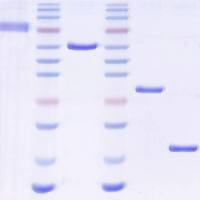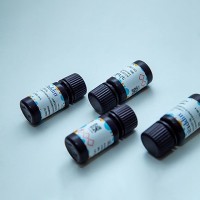Design of Bacterial Hosts for lac-Based Expression Vectors
互联网
815
Since introduction of the first pUC plasmids (1 ), a great variety of plasmid vectors that use α-complementation and expression from the lac promoter, or its derivatives tac and trc promoters, have been developed (e.g., see refs. 2 –14 ). In order to maximize utilization of these vectors, various Escherichia coli host strains have been designed which contain the lacZ ΔM15 allele (15 ) necessary for α-complementation and the lacI q (16 ,17 ) gene, which allows for overproduction of the lac repressor that is required for regulated expression from the lac promoter. The development of F episomes (7 ,14 ,18 ) or phages (1 ,19 ) containing these components facilitated the construction of various host strains, provided they do not express β-galactosidase (e.g., Δlac strains). However, these systems suffer from several short-comings that restrict their use:
| 1. |
Unless the episomes contain transposon-encoded antibiotic resistance markers (usually kanamycin or tetracycline), which also excludes their use in Tn5 - or Tn10 -containing strains, other commonly used F episomes require minimal medium for their maintenance because passage in rich media leads to their frequent loss (20 ),
|
| 2. |
Since the episomes and phages have been tailored for use in E. coli , they cannot be exploited for establishment of a lac -based α-complementation and regulated expression system in other bacteria.
|








